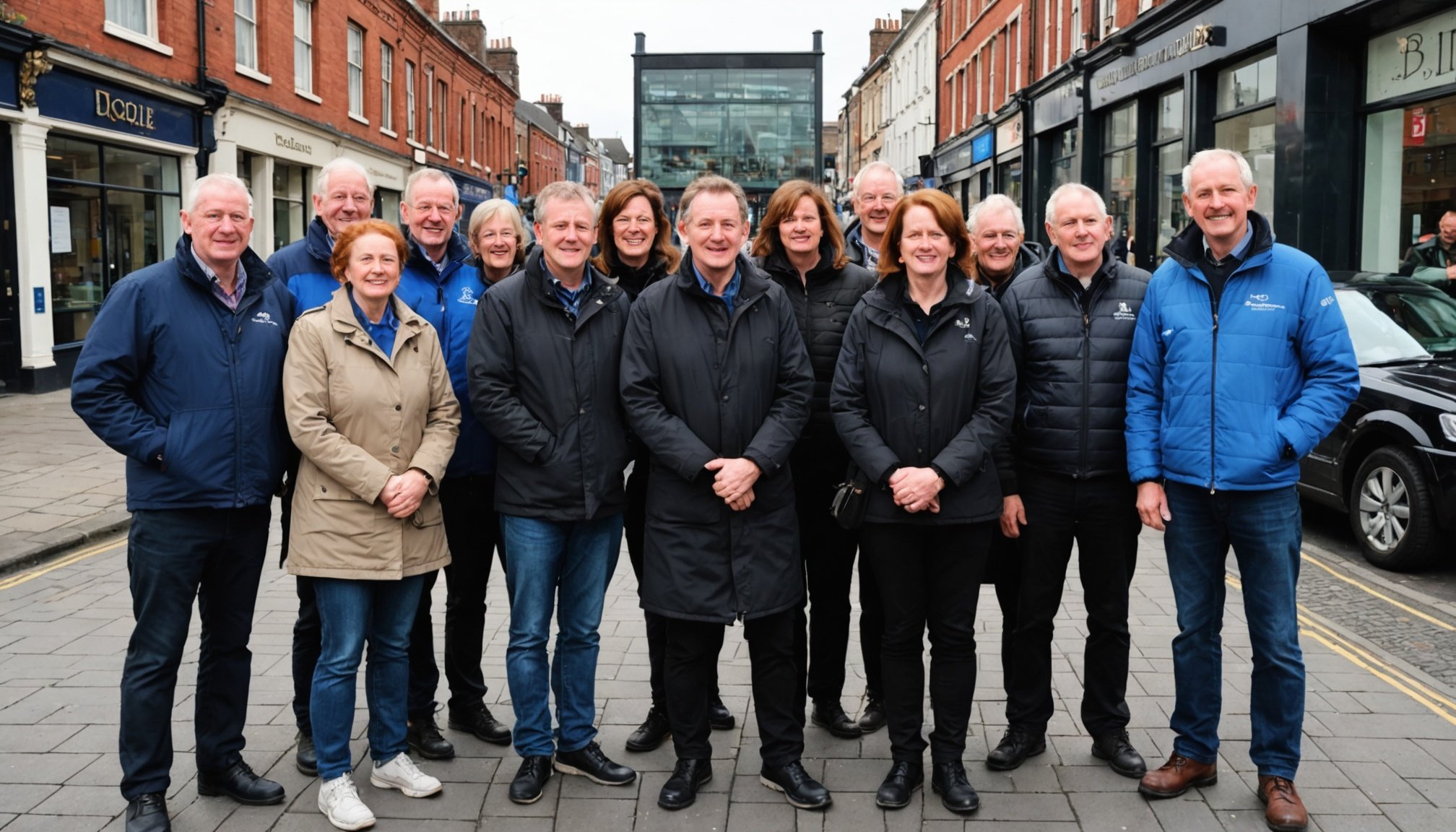Overview of the Troubles
Understanding the history of the Troubles is essential for anyone exploring Belfast. This historical conflict, spanning from the late 1960s to 1998, was marked by the sectarian divide between the predominantly Protestant unionists, who desired Northern Ireland to remain part of the United Kingdom, and the mainly Catholic nationalists, who sought reunification with the Republic of Ireland. This period was characterized by violence, civil unrest, and political deadlock, leaving a lasting imprint on Northern Ireland.
Walking tours of Belfast offer a compelling way to delve into the history of the Troubles. They serve as a dynamic medium for storytelling, bringing the past to life through the streets that bore witness to this tumultuous era. As you traverse sites of significant historical events, you gain insights into the complex narratives that shaped Belfast.
Topic to read : Uncover the magic of milford sound: a travel guide
These tours are not merely informative; they are integral to understanding the deeper historical context of the city. By engaging with local guides, participants can explore personal stories and learn about the resilience and peace-building efforts that have emerged since the Troubles. Engaging in Belfast walking tours can transform a visit into an educational journey through the intricate tapestry of the city’s past.
Recommended Walking Tours
Embarking on one of the best walking tours in Belfast provides an immersive way to engage with the city’s history. These experiences, often led by knowledgeable local guides, enrich your understanding of Belfast’s past, including pivotal moments of the Troubles. As you wander through the streets on a guided tour, you’ll uncover stories preserved in the city’s architecture and landmarks.
Topic to read : Discover Liverpool’s Hidden Titanic Heritage: Must-Visit Historic Landmarks of the Tragic Vessel
Top Rated Tours
When considering Belfast tours, certain experiences stand out for their insightful narratives and engaging themes. Many visitors praise a tour’s ability to weave together vibrant stories with historical facts, making the city’s past both accessible and captivating. Participants can expect an informative journey that entertains as much as it educates. Recommendations often highlight tours that incorporate a mix of themed narratives and unique perspectives provided by passionate guides.
Special Focus Tours
Some tours concentrate on specific events or influential figures from the Troubles, providing a deeper dive into the era. These thematic experiences emphasize stories of peace, resilience, and recovery, offering diverse viewpoints that challenge one’s understanding of Northern Ireland’s complex past. Whether through tales of historical milestones or reflections on the city’s evolving identity, each guided experience presents an opportunity for reflection and learning.
User Reviews and Testimonials
Belfast’s walking tours frequently receive enthusiastic customer reviews, highlighting their effectiveness and emotional impact. Participants appreciate the structured narratives that bring to life the complex history of the Troubles. Positive testimonials often mention the engaging storytelling by guides, which provides a comprehensive understanding of Belfast’s past.
Reviewers consistently note the accessibility of these guided experiences, with many praising how tours accommodate different interests and learning preferences. A common praise is the ability of local guides to sensitively navigate themes of division and resilience, ensuring every story resonates with participants on an emotional level. This depth of engagement encourages reflection and fosters a deeper connection to the city’s narrative.
Visitors also report high satisfaction with the variety of tour themes available. Whether drawn to political history or cultural perspectives, customers often find their expectations exceeded by the detailed insights provided. Feedback forums reveal that word-of-mouth recommendations are instrumental; hearing personal experiences and endorsements from previous participants often guides new visitors’ choices.
Those who have experienced Belfast walking tours typically describe them as essential educational opportunities that profoundly enhance their understanding and appreciation of Belfast’s history and ongoing journey toward peace and community healing.
Exploring Belfast Landmarks
Belfast’s intricate history is echoed in its numerous landmarks, making them crucial elements of any exploration. As you embark on Belfast walking tours, integrating visits to pivotal sites enhances the educational journey into the city’s past. Highlighting Belfast landmarks such as the Peace Walls and Belfast City Hall can deepen insights into the city’s complex narrative, especially in understanding the themes of the Troubles.
Historical sites associated with the Troubles, like the Falls Road and Shankill Road, serve as poignant reminders of the city’s turbulent history. These areas encapsulate stories of division and conflict, yet also of resilience and reconciliation, often featured prominently in tour narratives.
Beyond historical sites, cultural hotspots like the Cathedral Quarter offer a vibrant space reflecting Belfast’s revitalized identity, showcasing its evolution beyond the Troubles. This area is home to art galleries, music venues, and some of the region’s most celebrated murals, allowing visitors to see how culture continues to heal and unify the city.
For those interested in a more personal exploration, self-guided experiences provide flexibility. With so much to discover, these walking tours and landmark visits encourage a deeper connection to Belfast’s history and continuous journey towards peace.
Historical Themes and Narratives
Delving into the themes of the Troubles through Belfast walking tours offers unique insights into the city’s turbulent past. The storytelling blends personal and collective histories, allowing participants to grasp the nuanced impacts on Belfast’s communities. Walking tour narratives explore themes of division, peace, and remembrance. These elements are vital in shaping a deeper understanding of Belfast history.
Murals and monuments play a crucial role in bringing these themes to life. Through vibrant artworks scattered across the city, visitors witness stories of struggle and triumph. Each mural serves as a silent testament to the individuals and events that have shaped Northern Ireland.
Personal stories recounted by guides enrich the narrative further. By sharing firsthand experiences, guides offer a profound perspective on the impact of the Troubles. Such narratives highlight resilience and the ongoing journey toward healing.
Monuments, too, stand as powerful symbols of remembrance and peace. They commemorate those lost during the conflict, fostering reflection and dialogue. These storytelling mediums create a tapestry where history becomes accessible and engaging, ensuring that the lessons of the past inform Belfast’s path forward. With each step, walking tours knit together the historical fabric of this resilient city.
Practical Information for Tourists
Navigating the bustling scene of touring Belfast demands some strategic planning to fully appreciate what the city offers. Start with considering the tour duration and costs. Typically, walking tours in Belfast range from 90 minutes to 3 hours, providing flexibility to accommodate different schedules. Costs vary, with shorter, standard tours averaging around £10-£15, while more comprehensive or themed experiences can reach up to £25 per person. Some may opt for free tours, which offer an overview for those on a budget, though these often rely on tipping.
When booking a walking tour in Belfast, online platforms and official tourism sites provide easy access for reservations. Look for user-friendly sites with clear descriptions of what’s included in each tour for a seamless experience. Consider accessibility by checking if tours accommodate diverse needs, such as route suitability for those with limited mobility.
Finally, plan your visit around peak times and seasons. Belfast’s tourism peaks during spring and summer, offering vibrant weather but also greater crowds. For quieter experiences, visit during early spring or late autumn when tourists are fewer, ensuring a more relaxed exploration of Belfast’s rich tapestry.










